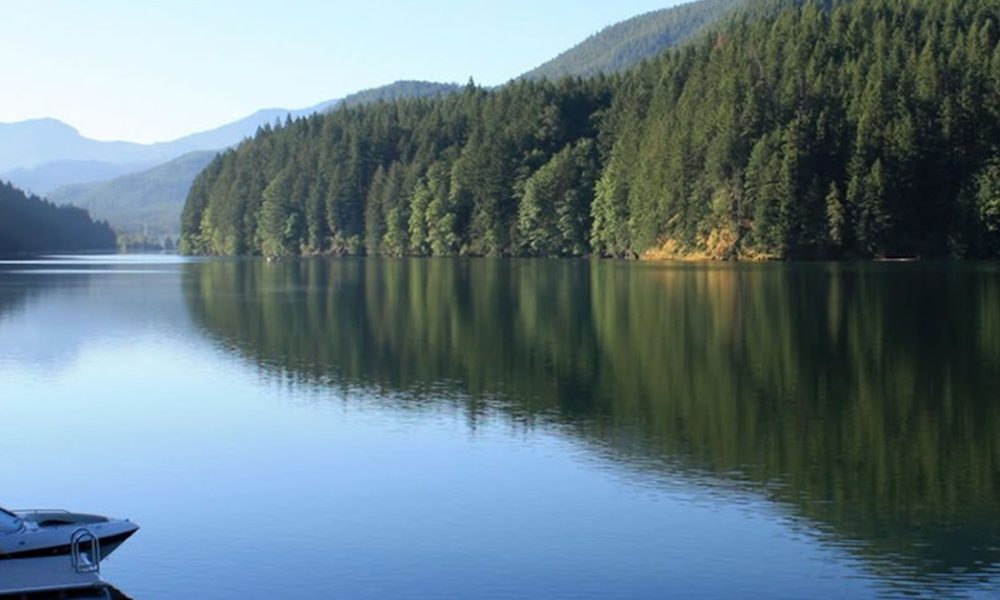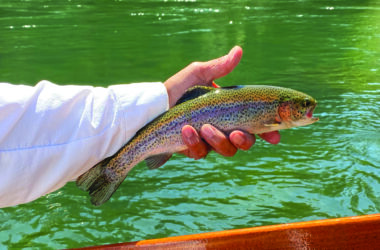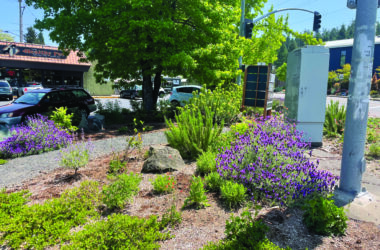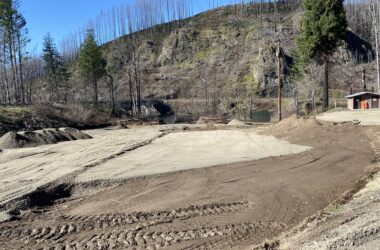 Detroit Lake is open year-round and located only 56 miles east of Salem. It is famous as a summer Kokanee fishery. It’s also stocked with trout each spring and just received a large delivery of trout. Lake levels are online at usace.army. Photos courtesy of The Army Corp of Engineers
Detroit Lake is open year-round and located only 56 miles east of Salem. It is famous as a summer Kokanee fishery. It’s also stocked with trout each spring and just received a large delivery of trout. Lake levels are online at usace.army. Photos courtesy of The Army Corp of Engineers
I have plenty to share with you all this week at the top of the report – and I know it’s news many are anticipating.
The relentless high-water conditions that have challenged most winter steelheaders since December have, for now, abated. As I prepare this report, all of the central Oregon coast rivers and many small creeks are in perfect condition to drift and bank-fish for winter steelhead.
I’ll get back to local steelheading opportunities a little further down the report, but first let me share information about a couple of important Army Corps of Engineers projects that could make your salmon fishing better. There also are numerous reservoirs in the southern Willamette Valley that are managed by the Army Corps and provide year-round and seasonal fishing and boating.
I spoke with Greg Taylor, the Army Corps of Engineers supervisory fisheries biologist for the southern Willamette Valley about water supply for the upcoming season. Taylor is the primary local spokesperson for the Corps and often speaks to angling and other groups about the management of the Corps’ eight dams and the water bodies held behind them in the Willamette Valley.
His job as a biologist is to balance the Corps’ responsibility to prevent floods and and to provide recreational opportunities with the least impact possible on wild, anadromous fish. The Corps also works to mitigate the loss of fish-spawning habitat because of the dam by paying for the production of hatchery salmon and trout that are all released into local rivers. It is an incredibly challenging task, but Taylor takes the responsibility deeply to heart and I admire Greg for his commitment.
Taylor reports that the Corps started to refill all the valley’s flood-control reservoirs on Feb. 1. Generally speaking, he was upbeat about the upcoming season and fairly confident that most reservoirs in his district will fill this spring and be ready by summer. It’s still three to four weeks before he will make a final determination, but it looks good.
On many reservoir lakes, levels won’t reach the end of most boat ramps until mid-April and consequently those lakes won’t get stocked with fish until early May. But there are two exceptions, open to fishing year-round: Detroit Reservoir has a ”low pool” boat ramp at Mongold Park and at Hill Creek reservoir, with year-round access at Packard Creek Recreation Site. In both cases, low-pool boat ramps allow boaters access all year and both lakes were recently stocked with thousands of trout.
Taylor and I also spoke about the largest challenge facing the Corps going forward and the fact that the Corps’ dams are a contributing factor to the decline of spring salmon in the Willamette basin. The fact is, spring chinook salmon in the Willamette River and its tributaries are just holding on by a thread. The factors are numerous, but one of the larger hurdles salmon face has been the loss of their traditional spawning habitat above the Army Corps dams.
In recognition of the problem and to its credit, the Corps is in the process of evaluating several options for Cougar Reservoir on the South Fork of the McKenzie River and Detroit Reservoir on the North Santiam River which would allow salmon to move upriver as adults to reach what is still some of the best salmon spawning habitat in the southern Willamette basin. Salmon would then swim back downstream through the dams as smolts the following spring.
Detroit Reservoir is among the Willamette Valley’s most-enjoyed resources, providing fishing and boating to thousands in the heart of the central Cascades. The proposed work at Detroit Reservoir stirred a bit of controversy among several user groups because the initial proposal by the Corps would have required them to drain the reservoir for several seasons.
But after public hearings, the Corps recognized the impact to tourism and the need to maintain summer lake levels sufficient for recreation. Its plan now is to perform all the upcoming work to build what will likely be a fish ladder ”in the wet” – in which case Taylor was certain that any inconvenience experienced by the public would be modest at best.
At Cougar Reservoir on the South Fork McKenzie, Taylor said ”several options are on the table.” Among the most promising is one that would decommission a portion of the hydroelectric production at Cougar Dam and, with some modifications, would utilize the current path the reservoir water uses to reach the turbines. That would allow salmon smolts to float downstream past the dam on their own. Currently, salmon smolts are collected in a trap on the lake but the process is turning out to be inefficient.
The other options were less direct and might require major modifications and expense. None of the proposals are inexpensive. With all options, adult salmon would be collected at the base of Cougar Dam and trucked up past the dam and released to spawn in the South Fork of the McKenzie.
The Corps is working with the Bonneville Power Administration – which owns the generators and the rights to the power produced at Cougar Reservoir – and are hopeful a solution can be reached. It was unfortunate that all the Willamette Valley dams were built with no fish passage; but returning these two rich river sections is vital to the future of spring salmon in the Willamette Valley, and a good start.
As I mentioned at the top of the report, steelhead rivers up and down the Oregon coast are in prime condition this weekend.
Rain is predicted but if the forecasts hold up the precipitation should help hold coastal rivers at fishable levels for both bank and floating anglers. The success rates have been good since rivers dropped to prime levels late last week, and unless we see a major blowout fishing should be excellent through February and into early March.
The Siuslaw, Lake Creek, Alsea and Siletz are all kicking out fish and now is the time to go! But please be prepared and plan to bring your own rock. The high water in January created a large bubble of ”pent-up demand.”
In a bloom of aluminum hundreds of boaters hit the water last week. Among them were river guides trying to recover their season after being blown off the river in January. Hundreds of other people were trying to shake the effects of ”cabin fever.” Patience will be required by all the players: it’s a little sandbox, my friends, so please exercise your better angels.
This is good news and the experienced anglers know the crowds will soon diminish and there will still be plenty of winter steelhead in most coastal rivers into early April. And, by the way, March is my favorite time to winter steelhead-fish.
Finally, the Seven Feathers Boat & Sportsmen’s Exposition returns to the Douglas County Fairgrounds in Roseburg.
It’s an ExpoSure event that runs over the Presidents’ Day weekend, Feb. 14-16.
Contact Frank and find the ”Perfect River Levels” at riverguideoutfitters.com.








